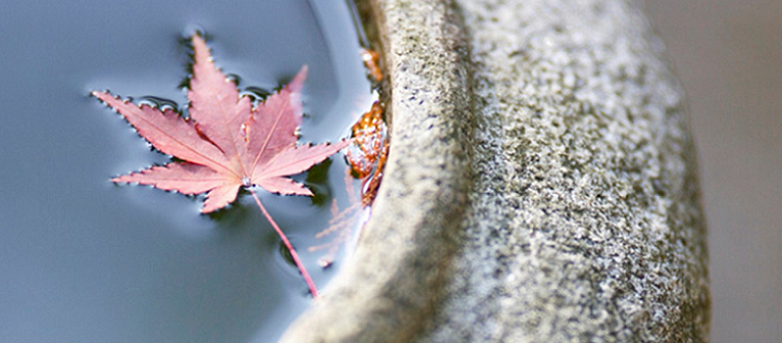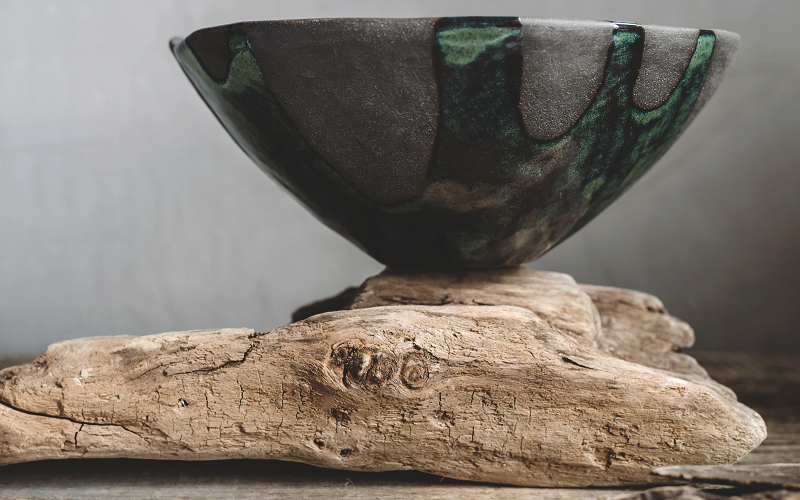Wabi-Sabi is a traditional Japanese concept that has been gaining attention in recent years for its ability to transform the way we view the world. At its core, Wabi-Sabi is about finding beauty in imperfection, embracing simplicity, and recognizing the transient nature of all things. In a world that often values perfection and uniformity, Wabi-Sabi offers a refreshing perspective on beauty and aesthetics that can help us to find peace and contentment in our lives.
What Is Wabi-Sabi?
Wabi-Sabi is a Japanese aesthetic philosophy that emphasizes the beauty of imperfection, simplicity, and transience. It is a way of seeing the world that values authenticity and naturalness over perfection and artificiality.
Wabi-Sabi is rooted in the Zen Buddhist tradition and is often associated with traditional Japanese arts such as tea ceremony, flower arrangement, and pottery. The term “Wabi” refers to a sense of rustic simplicity, while “Sabi” refers to the beauty that comes with age and wear.
Wabi-Sabi teaches us to accept the imperfections and flaws in ourselves, others, and the world around us, and to appreciate the beauty that can be found in the ordinary and everyday. It encourages us to let go of our attachment to material possessions and to find contentment in the present moment. Wabi-Sabi is not just an aesthetic ideal, but also a way of life that can bring a sense of calm and inner peace.

The Philosophy of Wabi-Sabi
The philosophy of Wabi-Sabi is grounded in three main principles: acceptance of imperfection, finding beauty in simplicity, and embracing transience. At its core, Wabi-Sabi teaches us to embrace the imperfect and to find beauty in the natural world. It emphasizes the importance of authenticity, humility, and a sense of harmony with the environment.
Wabi-Sabi teaches us to appreciate the simple things in life and to value the process over the end result. This philosophy encourages us to let go of our attachment to material possessions and to find contentment in the present moment.
It also emphasizes the importance of accepting change and recognizing the transient nature of all things. In doing so, Wabi-Sabi helps us to cultivate a sense of inner peace and contentment in our lives.
Examples of Wabi-Sabi in Japanese Culture
Wabi-Sabi is deeply ingrained in Japanese culture, and can be seen in many traditional arts and practices.
Tea Ceremony
The Japanese tea ceremony, or chanoyu, is a ritualized practice that embodies many aspects of Wabi-Sabi. The ceremony is focused on creating a sense of harmony and balance between the host, the guests, and the environment. The tea room is often decorated in a simple and understated style, with natural materials such as wood and paper used to create a sense of rustic beauty.
Ikebana (Flower Arrangement)
Ikebana is the Japanese art of flower arrangement, and is based on the principles of Wabi-Sabi. Ikebana emphasizes simplicity, asymmetry, and the use of natural materials such as branches, leaves, and flowers. The arrangements are often designed to highlight the beauty of imperfection and the transience of life.
Kintsugi (Golden Joinery)
Kintsugi is a traditional Japanese technique for repairing broken pottery. Instead of hiding the cracks, Kintsugi uses gold or silver to highlight the imperfections and create a sense of beauty in the broken pieces. The technique embodies the Wabi-Sabi principle of finding beauty in imperfection and embracing transience.

Bonsai
Bonsai is the art of cultivating miniature trees in containers. Bonsai emphasizes the natural beauty of the trees and the importance of the relationship between the tree and its container. Bonsai embodies the Wabi-Sabi principle of finding beauty in simplicity and accepting the imperfections of nature.
Architecture
Traditional Japanese architecture often incorporates the principles of Wabi-Sabi. Buildings are designed to blend in with the natural environment, and natural materials such as wood and paper are used to create a sense of rustic beauty. Imperfection and asymmetry are embraced, creating a sense of harmony and balance with the natural world.
How to Incorporate Wabi-Sabi into Your Life
Incorporating Wabi-Sabi into your life can help you to cultivate a sense of inner peace and contentment. Incorporating Wabi-Sabi into your life is not about following strict rules or guidelines, but rather about cultivating a mindset of acceptance, simplicity, and harmony.
- Simplify your surroundings: Embrace a minimalist lifestyle and remove clutter from your home and workspaces. Focus on using natural materials and simple designs to create a sense of rustic beauty.
- Find beauty in the everyday: Practice mindfulness and take time to appreciate the beauty in the simple things in life. This can be as simple as enjoying a cup of tea or taking a walk in nature.
- Embrace change: Recognize that everything in life is transient and impermanent. Embrace change and let go of your attachment to material possessions.
- Accept imperfection: Embrace the imperfect and find beauty in the natural flaws of yourself and others. Focus on authenticity and humility rather than striving for perfection.
- Cultivate a sense of harmony: Seek out balance and harmony in your daily life. Focus on creating a sense of harmony between yourself, others, and the natural world.
- Use natural materials: Incorporate natural materials such as wood, stone, and plants into your home and workspace. Focus on simplicity and natural beauty rather than artificial and manufactured materials.
- Practice gratitude: Focus on what you have rather than what you lack. Practice gratitude and appreciate the simple pleasures in life.

Wabi-Sabi and Mental Health
Wabi-Sabi can have a positive impact on mental health by promoting mindfulness, self-acceptance, and stress reduction. The practice of mindfulness, which is a central aspect of Wabi-Sabi, can help to reduce stress and anxiety by promoting a sense of calm and inner peace.
Wabi-Sabi also emphasizes self-acceptance and the acceptance of imperfection, which can help to reduce feelings of self-criticism and increase self-esteem. The focus on simplicity and natural beauty can also help to reduce feelings of overwhelm and anxiety by promoting a sense of calm and tranquility.
Wabi-Sabi teaches us to appreciate the present moment and find joy in the simple things in life, which can help to increase feelings of gratitude and happiness. By embracing the principles of Wabi-Sabi, we can cultivate a sense of contentment and inner peace that can have a positive impact on our overall well-being.

